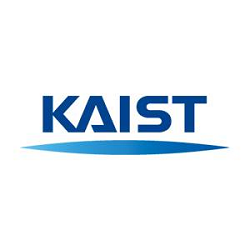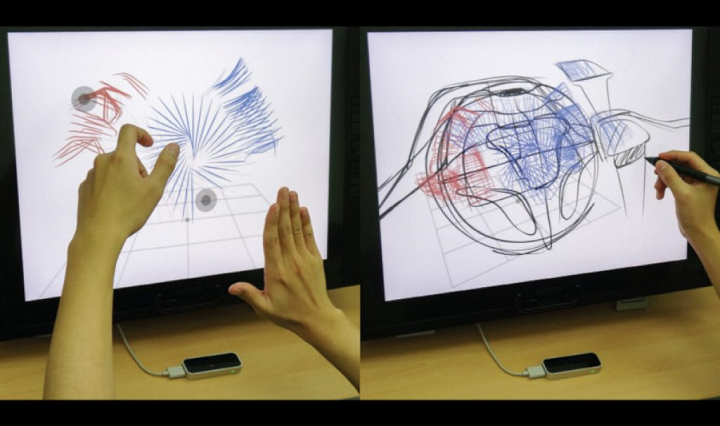 When you want to illustrate an object in finer detail, you use writing instruments, like pens. But a lot of the time, people will use their hands when they’re trying to describe an object. I fall into the latter category. I can’t draw worth anything, but one time, I was explaining the plot of a movie in great detail, talking with both my mouth and my hands, and accidentally hit someone else in the face as they happened to walk by…true story, I’m sometimes a danger to those around me when I’m talking.
When you want to illustrate an object in finer detail, you use writing instruments, like pens. But a lot of the time, people will use their hands when they’re trying to describe an object. I fall into the latter category. I can’t draw worth anything, but one time, I was explaining the plot of a movie in great detail, talking with both my mouth and my hands, and accidentally hit someone else in the face as they happened to walk by…true story, I’m sometimes a danger to those around me when I’m talking.
If you’ve been searching for an easier way to create your own 3D designs that combines the strengths of both pen and hand input, look no further than the interesting new method published by a group of researchers from the Korea Advanced Institute of Science and Technology (KAIST) in South Korea. This tool makes it possible to sketch 3D designs in midair.
A drawing has to be transformed from a 2D plan into a 3D shape in order to become a real product, but it can be challenging to infer 3D shapes that accurately match a designer’s intent from 2D hand-drawn images. The KAIST researchers, led by Professor Bae Seok-Hyung, developed a new 3D sketching workflow, called Agile 3D Sketching with Air Scaffolding, and described their technique in a research paper for the Proceedings of the 2018 Computer-Human Interaction Conference.
The abstract reads, “Hand motion and pen drawing can be intuitive and expressive inputs for professional digital 3D authoring. However, their inherent limitations have hampered wider adoption. 3D sketching using hand motion is rapid but rough, and 3D sketching using pen drawing is delicate but tedious. Our new 3D sketching workflow combines these two in a complementary manner. The user makes quick hand motions in the air to generate approximate 3D shapes, and uses them as scaffolds on which to add details via pen-based 3D sketching on a tablet device. Our air scaffolding technique and corresponding algorithm extract only the intended shapes from unconstrained hand motions. Then, the user sketches 3D ideas by defining sketching planes on these scaffolds while appending new scaffolds, as needed. A user study shows that our progressive and iterative workflow enables more agile 3D sketching compared to ones using either hand motion or pen drawing alone.”
 Designers can use KAIST’s new 3D sketching method to make rough 3D shapes out of their hand motions in the air; these shapes will later be put to work as scaffolds. Then, finer details can be added to a tablet with pen-based 3D sketching.
Designers can use KAIST’s new 3D sketching method to make rough 3D shapes out of their hand motions in the air; these shapes will later be put to work as scaffolds. Then, finer details can be added to a tablet with pen-based 3D sketching.
In order to create this method, the KAIST research team developed an algorithm that could identify descriptive hand motions from more transitory ones, and then extract only the shapes that are originally intended from the unconstrained movements.
Professor Bae said, “Based on in-depth understanding of designers, we will take the lead in innovating the design process by applying cutting-edge technology.”
The researchers conducted user tests, and determined that their new method is easy to both learn and use. It increases the accuracy of defining both the scale and proportion of products, while also saving time on design work.
“I believe the system will enhance product quality and work efficiency because designers can express their 3D ideas quickly yet accurately without using complex 3D CAD modeling software. There have been many attempts to encourage creative activities in various fields by using advanced computer technology,” said KAIST PhD candidate Kim Yongkwan.
The team believes that its new 3D sketching tool has multiple applications, such as making movies in the entertainment industry and in the automotive field. The technique could also be combined with smart production technology, like 3D printing, in order to speed up manufacturing processes and make them more flexible.
Co-authors of the paper include Yongkwan, Sang-Gyun An, Joon Hyub Lee, and Professor Bae.
Discuss this story and other 3D printing topics at 3DPrintBoard.com or share your thoughts in the Facebook comments below.
[Source/Images: Asian Scientist]Subscribe to Our Email Newsletter
Stay up-to-date on all the latest news from the 3D printing industry and receive information and offers from third party vendors.
You May Also Like
3D Printing Unpeeled: New Arkema Material for HP, Saddle and Macro MEMS
A new Arkema material for MJF is said to reduce costs per part by up to 25% and have an 85% reusability ratio. HP 3D HR PA 12 S has been...
3D Printing News Briefs, January 20, 2024: FDM, LPBF, Underwater 3D Printer, Racing, & More
We’re starting off with a process certification in today’s 3D Printing News Briefs, and then moving on to research about solute trapping, laser powder bed fusion, and then moving on...
3D Printing Webinar and Event Roundup: December 3, 2023
We’ve got plenty of events and webinars coming up for you this week! Quickparts is having a Manufacturing Roadshow, America Makes is holding a Member Town Hall, Stratafest makes two...
Formnext 2023 Day Three: Slam Dunk
I’m high—high on trade show. I’ve met numerous new faces and reconnected with old friends, creating an absolutely wonderful atmosphere. The excitement is palpable over several emerging developments. The high...

































